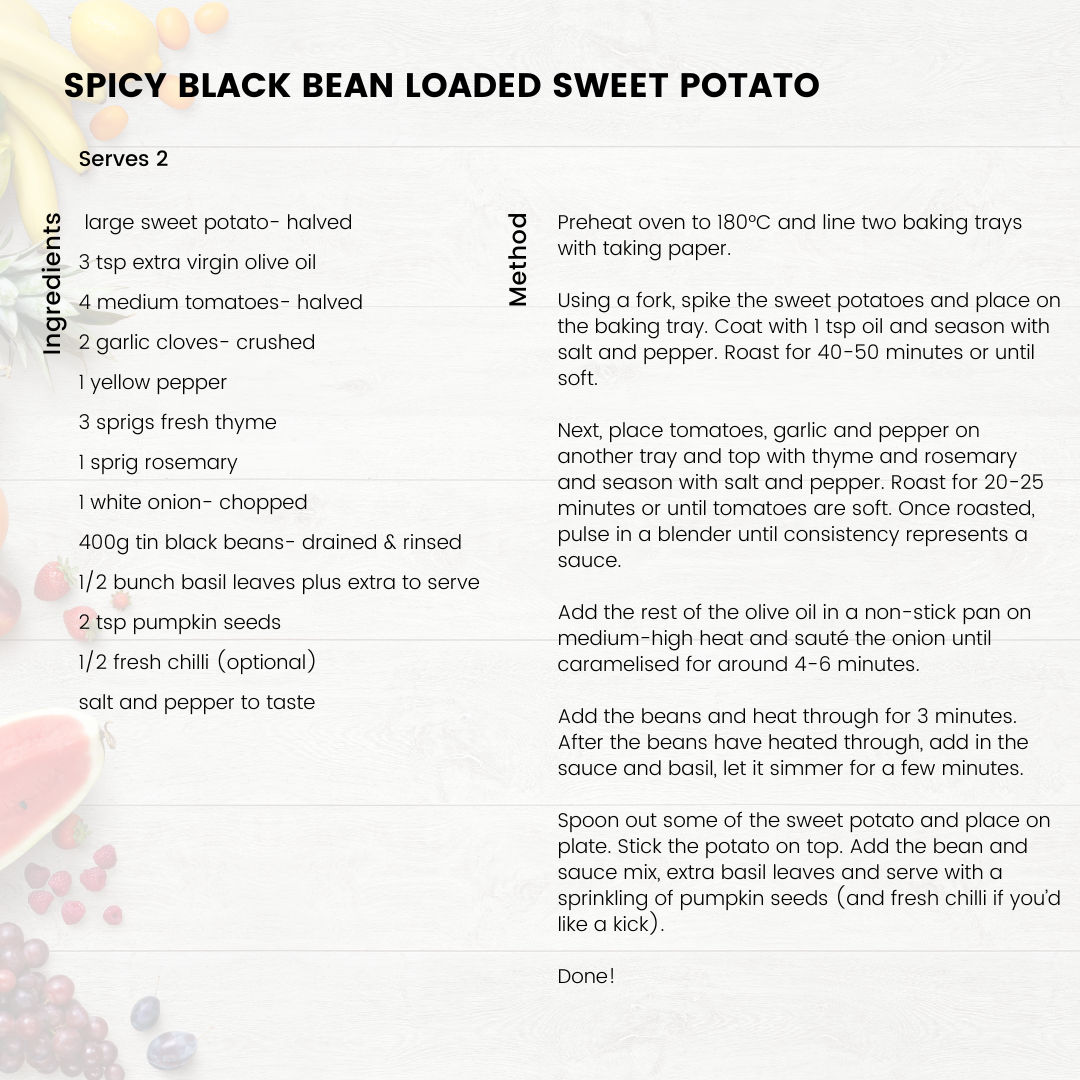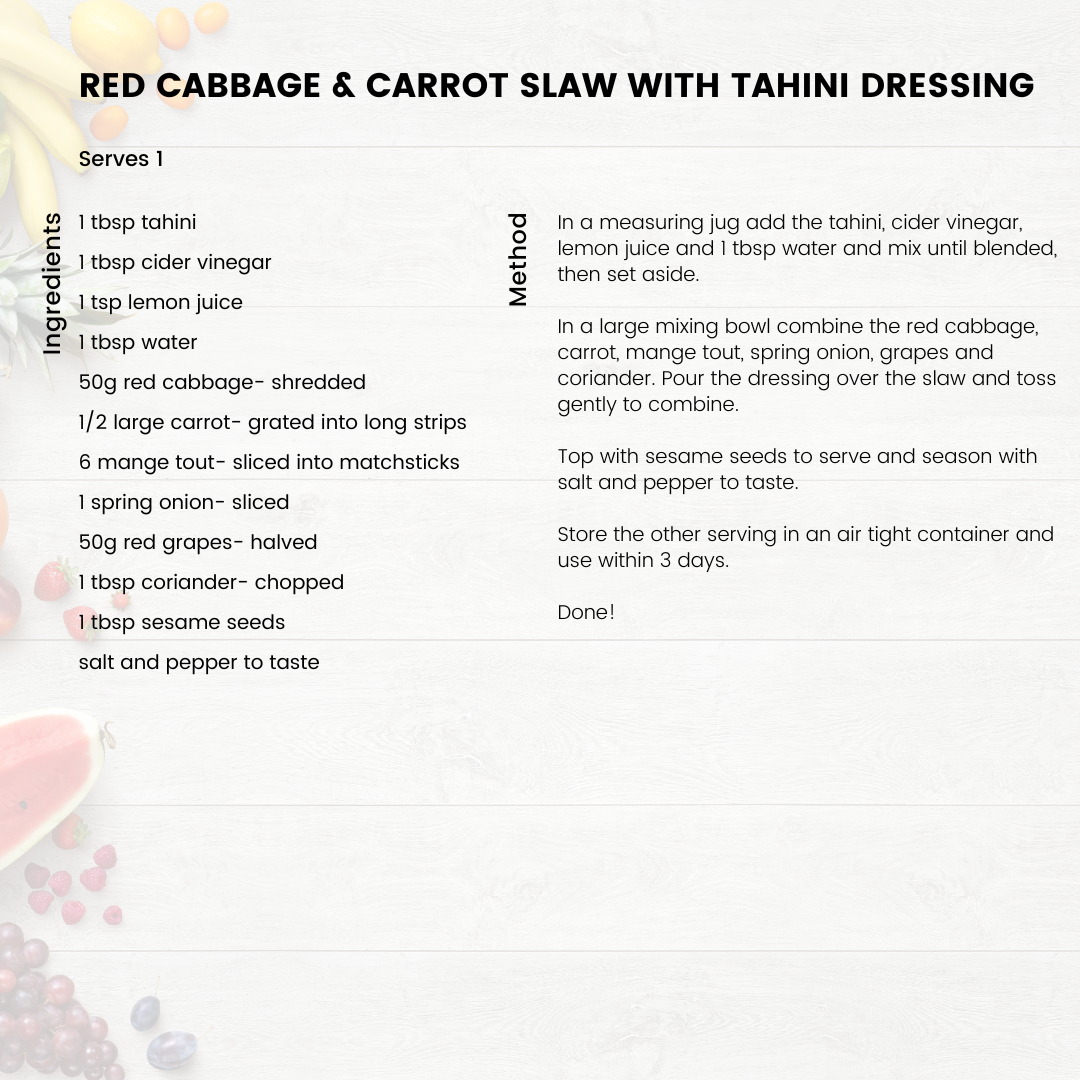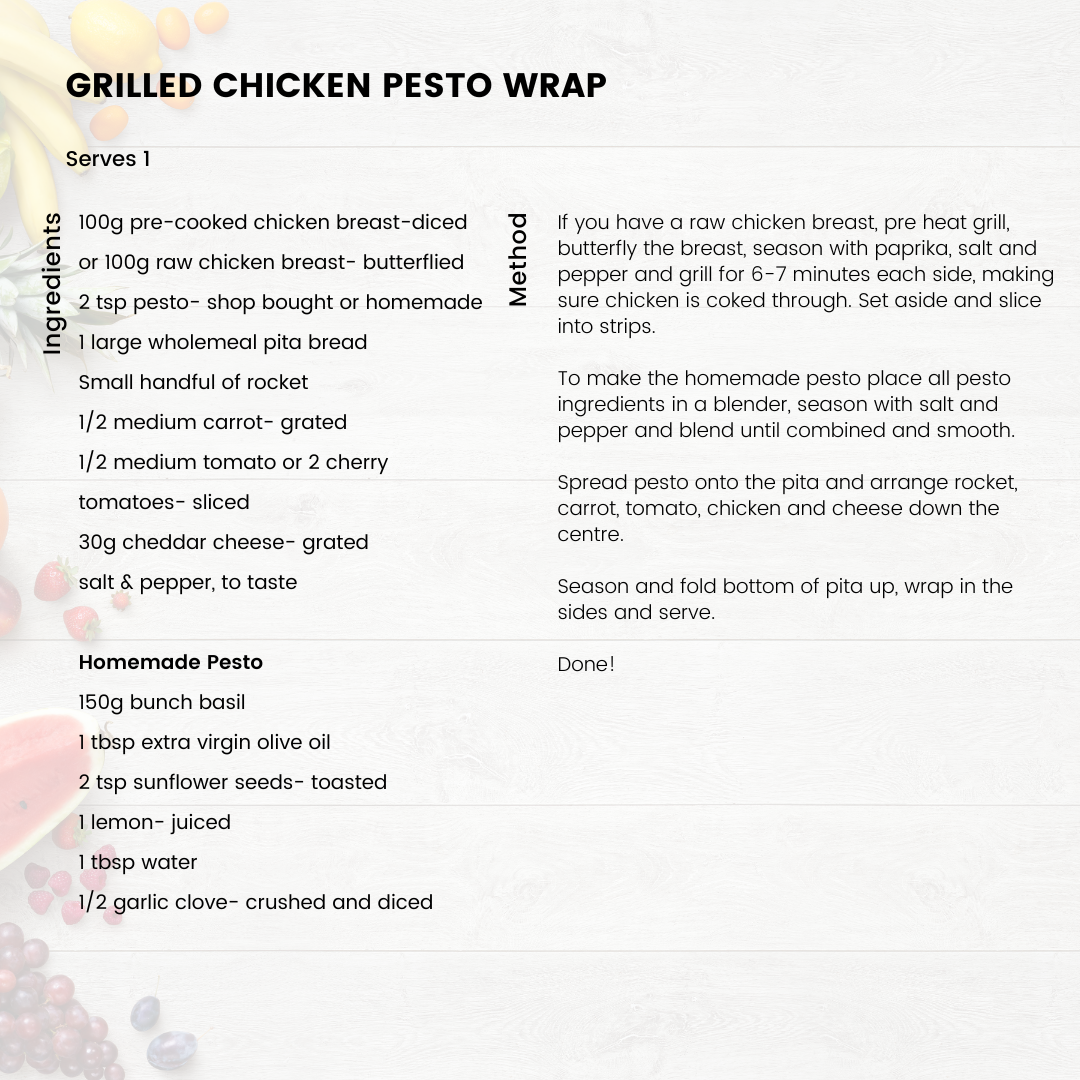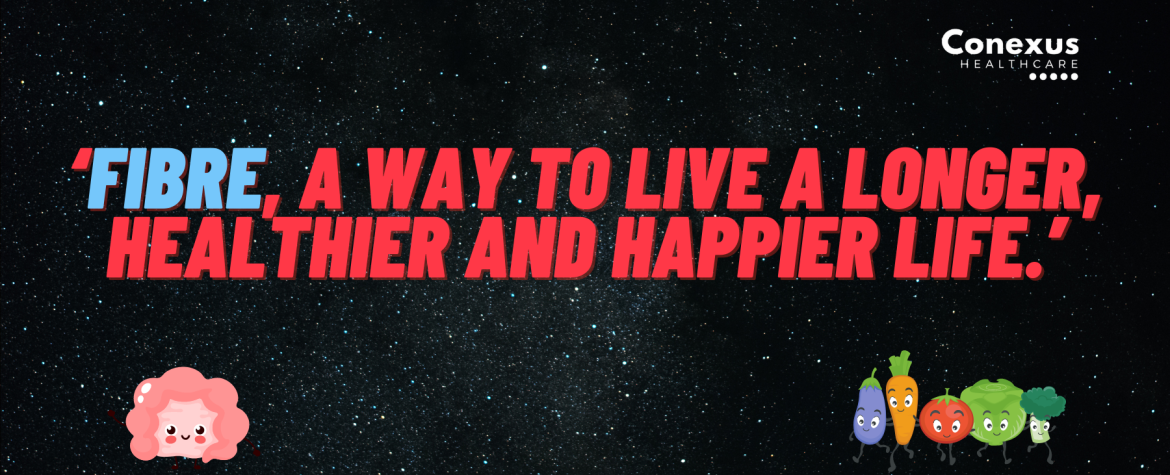Digestive Health Series – ‘Fibre, a way to live a longer, healthier and happier life.’
In the last digestive health blog we discussed the little living universe inside your colon, the gut microbiome. These little guys have so much influence on your overall health, from influencing your immune system, improving your cognitive function, improving your mood, reducing the risk of neurodegenerative diseases, influencing your metabolism and weight, and reducing the risk of cancers, infection and disease. So, looking after your gut bugs is a great way to live a longer, healthier and happier life. But how do we keep our gut bug friends happy? What’s the easiest way to do that? Read on to find out more!
What is Fibre – it’s much more than your Grandma’s Bran Flakes?
Most people will have heard of fibre, and that it is good for us. But why? Mostly, people think that fibre is just something that helps us have a successful trip to the toilet. Which is correct. However, fibre is so much more valuable to our health. Dietary fibre comes from plants. It is a form of carbohydrate that cannot be broken down by human digestive enzymes. So how does fibre get broken down? Yes, you guessed it, our gut microbes. Fibre is so biochemically unique that there may be millions of types of fibre in nature, some of which we might not know of yet. But to keep things simple, we break these types of fibres into two categories. All plants will contain insoluble and/or soluble fibre in different amounts.
Types of Fibre
Insoluble fibre is traditionally what you’ve heard about, it helps us poop. You can think of insoluble fibre as ‘roughage’ and this is found in plants such as whole grains, nuts, seeds and the skins and stems of vegetables. These types of fibres pass through our gastrointestinal tract and give our digestive system a good old scrub and clean. It passes through quicker and relatively unchanged, therefore remaining largely intact in the colon, where it increases viscosity and bulking of the faecal matter…gross I know. I never thought I’d ever type ‘faecal matter’ in a blog…but hey ho, moving on. Insoluble fibre can help prevent a rather uncomfortable trip to the bathroom.
Soluble fibre passes through the gastrointestinal tract the same, however because its soluble, it forms a gel like substance that helps slow down the process of digestion and absorption of nutrients. This is a good thing! The soluble fibres called prebiotic fibres provide us with the most benefit. Once these prebiotic fibres reach the colon, they provide food for the 39 trillion microbes in your gut. These different microbes start to break down and metabolise (use these fibres for energy) these prebiotic fibres. Once broken down, they release chemicals called short-chain fatty acids (SCFAs). These SCFAs are effectively the waste products of our microbes’ feast, yet we use these by-products to our advantage, and they have so many positive effects on our health!
How does Fibre and Short Chain Fatty Acids affect our Health?
Eating fibre-rich foods that release SCFAs have positive effects on our brain, heart, immune system and metabolism. In the brain, SCFAs slow down the neurodegenerative process, helping reduce the risk of Alzheimer’s. They also reduce inflammation all around the body, which in the brain can improve focus and memory.
For the heart, increasing fibre intake was linked to a 40% lower risk of coronary heart disease. Higher fibre intake also reduces the risk of metabolic syndrome, which can lead to heart disease and diabetes.
Eating lots of ultra-processed foods can damage the lining of your gut. This is known as increased gut permeability or ‘leaky gut syndrome’. This can result in toxins ‘leaking’ through your gut lining and entering your wider system causing systemic damage. This is not good. Eating fibre and producing SCFAs can help heal a leaky gut and reduce the damage these toxins can cause. If you’re reading this and still not wanting to eat more plants and fibre… individuals eating more fibre over a decade were 80% less likely to have hypertension, dementia, depression, diabetes and disability compared to lower fibre intake.
Now before you increase your fibre intake through the roof there’s some important things to consider, so hold your horses!
Fibre Recommendations
Sadly, much of the world has adopted the typical western diet of ultra-processed foods and refined sugar, resulting that on average, people consume 15g of fibre a day, and some even lower. It is recommended that we consume 25g per day of fibre if you’re a woman under 50 and 21g of fibre per day if you’re a woman over 50. If you’re male, it’s recommended you consume 35g of fibre if you’re under 50 and 30g if you’re over 50.
However, if you think of your gut as a muscle for just a second. Overloading your gut bugs with more fibre than they can handle can cause some symptoms such as gas, bloating and constipation. We want to build up its strength slowly. Therefore, increase your fibre intake gradually over time, your gut bugs will thank and reward you!
Sources
It’s important to get good amounts of both insoluble and soluble fibre so here are some sources. Good sources of insoluble fibre include; a variety of beans, nuts, cauliflower, potatoes, green beans and vegetables including their skin. For soluble prebiotic fibre (food for your gut bugs), eat foods such as; berries, avocados, kale, garlic, spinach, broccoli, unripe bananas, peppers and dark chocolate! Yes, chocolate! Just make sure its 80% cacao or higher!
Complications
If you’re eating the same few plants, regularly eating processed foods and your fibre intake is low, you will likely be reducing the diversity of gut microbe species increasing your risk of imbalances in your gut known as dysbiosis. Dysbiosis can increase your risk of digestive issues, weight gain and obesity, diabetes, autoimmune diseases and increasing mood disorders such as anxiety and depression.
Summary
Per week, aim to eat 30 different plants (dried herbs, spices, nuts and seeds all count too). This is a great way to ensure you get a diversity of fibre to feed the diversity of your gut microbes, because they don’t all eat the same thing! A more diverse gut microbiome will help you live a longer, healthier and happier life!
Author: Paul Rudd, Health and Wellbeing Coach at Trinity Health Group PCN
Here are 5 different gut friendly recipes filled with prebiotic fibres to feed those 39 trillion gut bugs:






